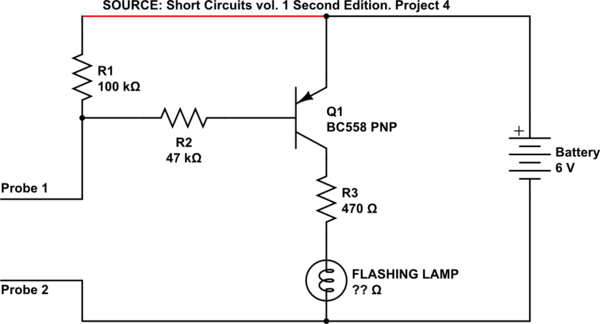My fourth electronics project ever. The most challenging yet.
I've wired up this project (Project 4 - Short Circuits project kit Jaycar Electronics). After much research, it doesn't do what I expected. I complete the circuit by touching the two probe wires together and the LED flashes - so far so good.
I then disconnected the wire running from the emitter to the 100k resistor and connected the two probe wires again. The LED still flashed. I expected it not to flash because the base current can't flow through a circuit (out of the base) due to the fact the circuit was broken by me disconnecting the wire.
My expectation was that no current can flow between the collector and the emitter until a base current was supplied. Perhaps the calculation of the impedance was understated and a current would flow from the collector through to the emitter anyway because the current is simply to big for the transistor to resist, base current applied or not!

simulate this circuit – Schematic created using CircuitLab
I think I'm missing something quite fundamental here. I'm not experienced enough in electronics to accuse a textbook of being incorrect.
